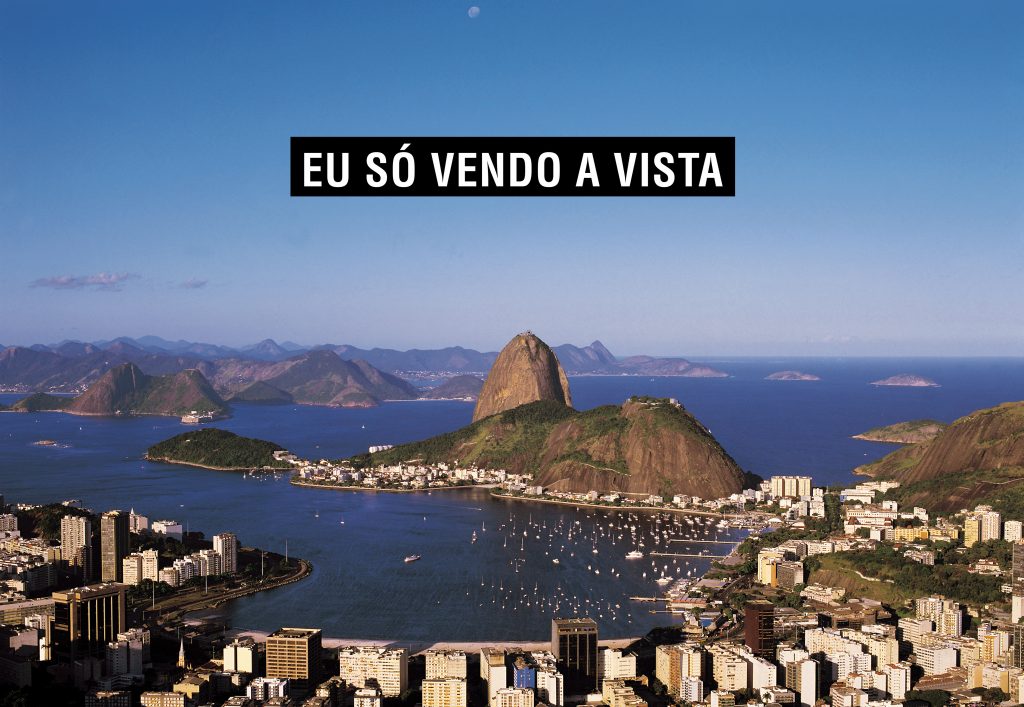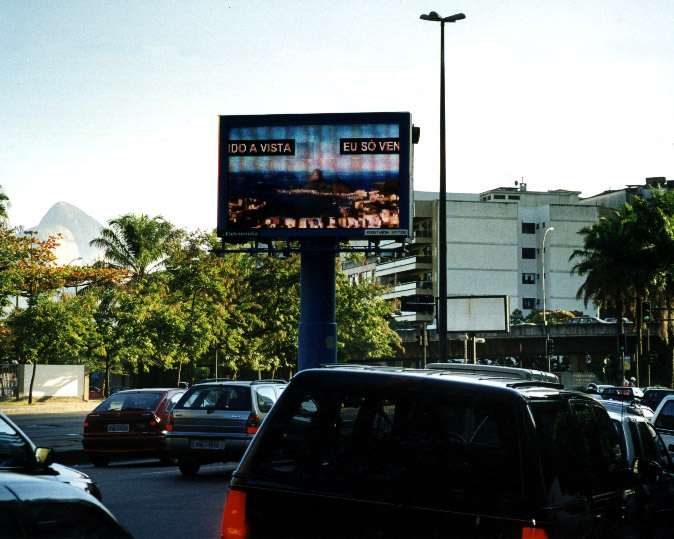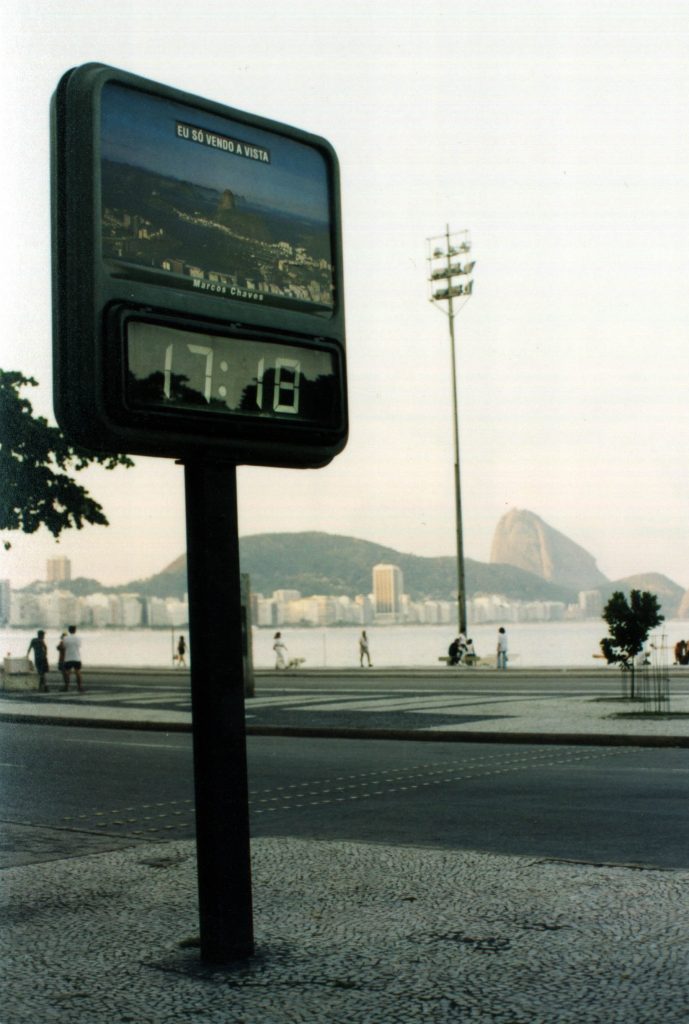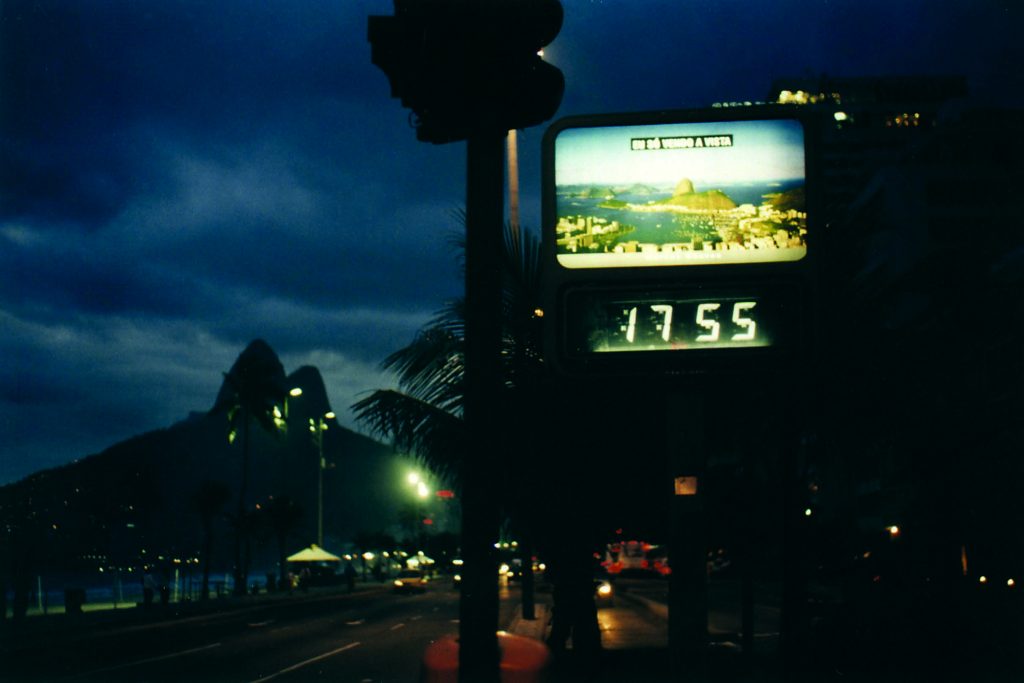
Eu só vendo a vista

Marcos Chaves ‘ most notable photographic work is Eu só vendo a vista, 1997. It is an appropriation of our Sugar Loaf or, even better, of an icon of the city of Rio de Janeiro, an image that we see everyday and that suffers the wastage of this daily recurrence, as much as the United States flag did in relation to its country in the eyes of Jasper Johns. More than using the Sugar Loaf as a ready-made, Chaves appropriated the tourist image of the landscape that is sold by heaps as post-cards. The post-cards go so far as to make our eyes become “indifferent” to the “natural wonders” of the city. To displace the post-card from newsstands or travel agencies to the field of art doesn’t mean to re-qualify natural Beauty. The Idea must be, rather, to transpose the landscape or nature to the intellectual field of a thought that will act on it and change it. And this is where the sentence “Eu só vendo a vista” comes in with all its semantic ambiguity. The fact that the artist took out the crasis form the “a” in common business expression “a vista” (for cash) was essential for giving it a sense of ambiguity (a vista = the view, the eyesight). It opened its potential meaning to several interpretations. Inside it are the statements: “Eu só, vendo a vista” (with we added comma or pause, it reads as ‘the lonely subject seeing the landscape’); “Eu só vendo a vista” (the subject that only sells the photograph of the landscape or view, the post-card; or the subject-artist that only sells the work on the photograph with the view; or-again, without the crasis, the subject that sells only his eyesight); and, at last, “Eu só vendo a vista” (I only sell for cash).
This work had three versions. The first one, the one that gave Marcos Chaves the Travel in Brazil Award at the XXVI Salão Nacional, was filmed in video, imparting life to the “post-card”, although an absent-minded watcher might not notice the fact. The image seemed to be still but actually it was pulsating and in the distance of the urban texture a small car could be seen passing. Over this nearly still image, the title sentence runs through the screen as a neon light sign, and always in such a way that no word is missed during the projection. The study of this looping was carried out with mathematical precision in order to keep the integrity of the statement during its projection on the landscape.
The second version, an offset engraving, gave the work a character of multiplicity, marketable and affordable as post-cards are – made to be sold for cash. In practice, this second version structurally made the work into a natural continuation of the very questions it pointed out.
It led the ready-made back to the chain of its original status quo, even if intersected by a strange proposal. At this point it is important to notice that Cildo Meireles’ bottles of Coca-Cola, a work of the 70’s, also returned to the distribution market after the artist’s interference.
The last version, in digital process, was exhibited on electronics boards in several Brazilian cities, reaching, finally the mass distribution circuit and thus contributing to close the circuit of the work’s rationale itself.





